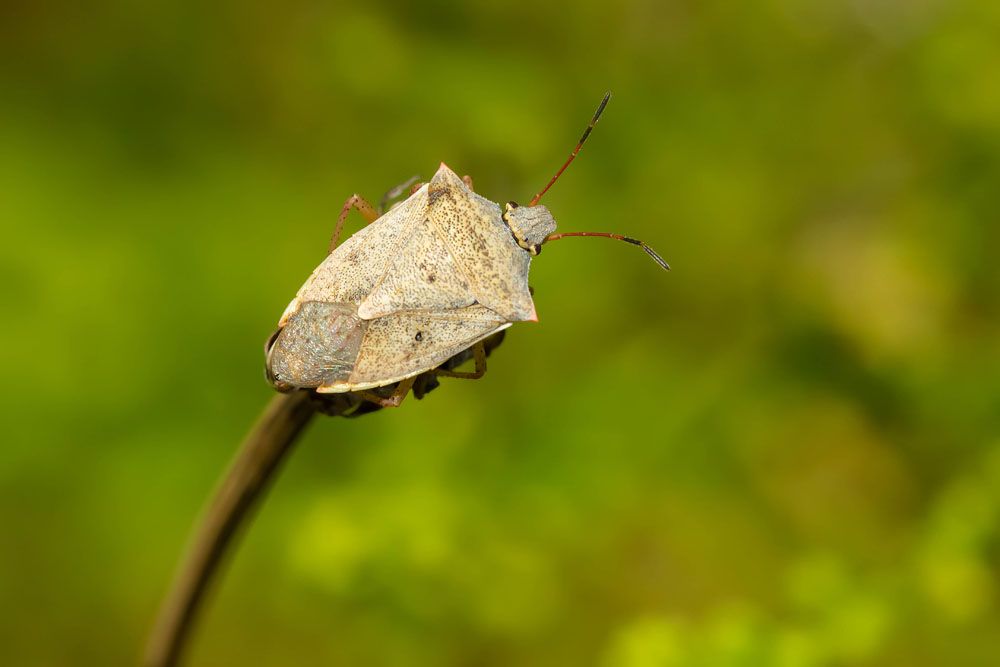
One Spotted Stink Bug – Euschistus variolarius
One Spotted Stink Bug: Appearance, Territory, Damage and Life
Latin Name: Euschistus Variolarius
Appearances: The dorsal surface is greyish or greenish yellow, with many sparse dark brownish grey puncture markings — the overall colour is brown, and the head is small in comparison to the shield of the thorax. The shield’s “shoulders” are rounded at times and pointy and rose-colored at others.
Host Plants: The undersides of practically any plant’s leaves are where stink bugs lay their eggs. They can put them on fruit tree leaves or any other plant that produces fruits or vegetables. Plants that serve as hosts: Grains, grasses, and vegetables; fruit trees if the original host dies; orchards on rare occasions; and other insects.
Territory: Found mostly on all over the Canada.
Damage Caused: Adults and nymphs use their piercing-sucking mouthparts to extract nutrients from plants. This form of feeding might result in irregular plant growth, stem slitting, or leaf twisting. Columns of holes that get thicker and longer as the plant grows are another indication. Individual kernels may perish, discolouration may ensue, and corn cobs may grow away from the stalk, creating uneven growth in some situations. Fortunately, this isn’t a major issue in the Midwest, where these pests cause little economic damage
Life Cycle and Habits: The eggs are light green to cream in colour and formed like a barrel with a flat top and a circular cover on the head end. Nymphs are similar to adults in appearance, but they are smaller and lack fully formed wings. Wing pads appear as the nymphs grow older.
Adults Have a body that is formed like a shield. Males are more elongated and oval, while females are more rounded. There are many sparse dark brownish grey puncture marks on the dorsal surface, which is grey or greenish yellow. The overall colour is brown, and the head is modest in comparison to the thorax shield’s size. The shield’s shoulders are rounded at times and pointy and rose-colored at others. The base of the 5-segmented antennae is normally brown, with black on the 4th and 5th segments. The body’s underside is pale green to yellowish.
